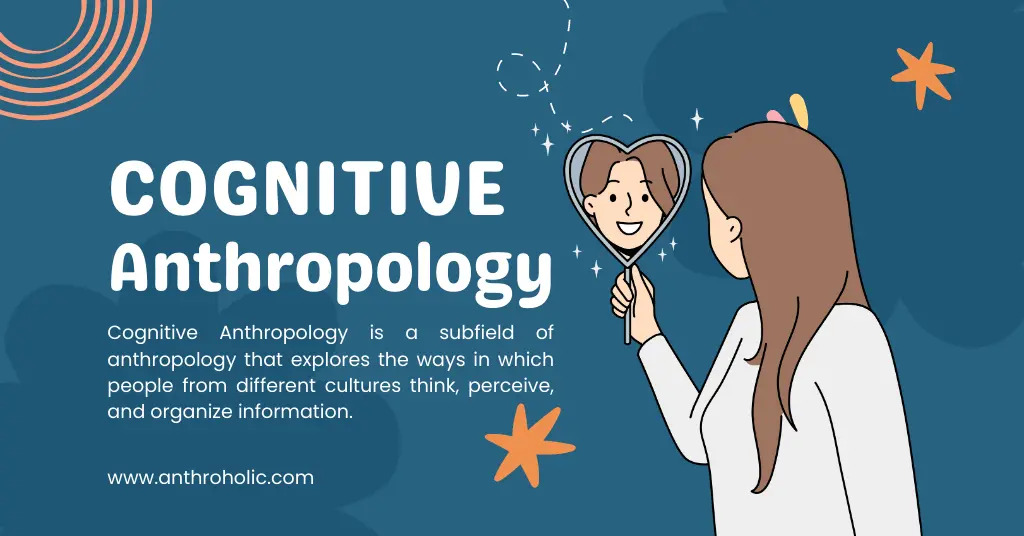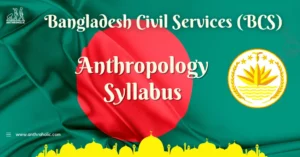AI Answer Evaluation Platform Live Now. Try Free Answer Evaluation Now
Cognitive Anthropology
Cognitive Anthropology is a subfield of anthropology that explores the ways in which people from different cultures think, perceive, and organize information (D’Andrade 2). It delves into the mental processes and cognitive systems that underlie human behavior, seeking to understand how different cultural groups make sense of the world around them. The study of cognitive anthropology is essential to understand the rich diversity of human thought and experience, ultimately shedding light on the universal and specific aspects of human cognition.

Historical Background
The roots of cognitive anthropology can be traced back to the 1950s and 1960s, when anthropologists such as Claude Lévi-Strauss and Edward Sapir began to focus on the cognitive aspects of culture (Lévi-Strauss 25). Lévi-Strauss’s work on structuralism, for example, sought to identify universal cognitive structures that underlie human thought. Sapir, on the other hand, explored the relationship between language and thought, proposing that different languages shape their speakers’ cognitive processes in unique ways (Sapir 207).
The emergence of cognitive anthropology as a distinct subfield is closely tied to the broader cognitive revolution that took place in the 1960s and 1970s (D’Andrade 3). This revolution was marked by a shift in focus from behaviorism to cognitive processes, such as perception, memory, and reasoning. The development of new theories and research methods during this period laid the foundation for the growth of cognitive anthropology.
Major Theoretical Approaches
- Cultural Models: Cultural models are cognitive frameworks that help individuals make sense of their experiences and guide their behavior in specific cultural contexts (D’Andrade 32). They can include beliefs, values, norms, and other cognitive structures that shape how people think, feel, and act. The study of cultural models in cognitive anthropology seeks to identify and analyze these frameworks, shedding light on the ways in which they vary across cultures and influence human behavior.
- Ethnoscience: Ethnoscience is an approach within cognitive anthropology that examines the ways in which different cultures classify and organize the natural world (Berlin, Breedlove, and Raven 1). This approach emphasizes the role of language in shaping cognition and seeks to uncover the underlying cognitive structures that inform a culture’s taxonomies and categories. By comparing different classification systems, ethnoscience researchers can gain insight into the cognitive processes that govern human perception and reasoning.
- Schema Theory: Schema theory posits that human cognition is organized around mental structures called schemas, which are cognitive representations of objects, events, or situations (Bartlett 202). These schemas help people process and interpret information, guiding their expectations and behavior in various contexts. Cognitive anthropologists who adopt schema theory as a framework aim to explore the role of schemas in shaping cultural patterns and individual experiences.
Methodologies and Research Techniques
- Ethnographic Fieldwork: Ethnographic fieldwork is a primary research method in cognitive anthropology, involving the direct observation and participation in the daily lives of individuals from different cultural backgrounds (Spradley 6). This immersive approach enables cognitive anthropologists to gain deep insights into the ways in which people think, perceive, and process information. Field notes, interviews, and questionnaires are some of the data collection techniques used during ethnographic fieldwork.
- Cognitive Elicitation Techniques: Cognitive anthropologists employ a variety of elicitation techniques to access the cognitive structures and processes that underlie human behavior (Weller and Romney 11). These techniques may include free listing, pile sorting, and triad tests, among others. By gathering data on how individuals perceive, categorize, and organize information, cognitive anthropologists can identify patterns and variations in cognitive processes across cultures.
- Experimental Methods: Experimental methods are increasingly being used in cognitive anthropology to test hypotheses and establish causal relationships between cognitive processes and cultural practices (Medin and Atran 29). These methods may involve controlled experiments, quasi-experiments, or natural experiments, which are designed to systematically manipulate variables and observe their effects on cognition and behavior.
Applications of Cognitive Anthropology
- Education and Pedagogy: Cognitive anthropology can inform education and pedagogy by providing insights into the ways in which cultural models and cognitive processes influence learning and problem-solving (Cole and Scribner 31). By understanding the cultural and cognitive factors that shape students’ knowledge and skills, educators can develop more effective teaching strategies and curricula that are sensitive to the diverse needs and backgrounds of their students.
- Cross-Cultural Communication: The study of cognitive anthropology can also enhance cross-cultural communication by fostering a deeper understanding of the cognitive and cultural factors that underlie communication practices (Gumperz and Levinson 16). By examining the ways in which different cultural groups process information, interpret messages, and use language, cognitive anthropologists can help individuals and organizations navigate communication challenges in an increasingly interconnected world.
Conclusion
Cognitive anthropology is a fascinating and essential subfield of anthropology that seeks to explore the complex interplay between culture and cognition. By examining cultural models, ethnoscience, and schema theory, cognitive anthropologists aim to uncover the ways in which human thought and perception are shaped by culture and context. Through rigorous ethnographic fieldwork, cognitive elicitation techniques, and experimental methods, researchers in this field contribute valuable insights to our understanding of the human mind and its rich diversity across cultures.
See Also
Works Cited
- Bartlett, Frederic C. Remembering: A Study in Experimental and Social Psychology. Cambridge University Press, 1932.
- Berlin, Brent, Dennis E. Breedlove, and Peter H. Raven. “General Principles of Classification and Nomenclature in Folk Biology.” American Anthropologist, vol. 75, no. 1, 1973, pp. 214-242.
- Cole, Michael, and Sylvia Scribner. “Culture and Cognitive Development.” Handbook of Child Psychology, edited by Paul H. Mussen, John Wiley & Sons, 1983, pp. 295-356.
- D’Andrade, Roy G. The Development of Cognitive Anthropology. Cambridge University Press, 1995.
- Gumperz, John J., and Stephen C. Levinson, editors. Rethinking Linguistic Relativity. Cambridge University Press, 1996.
- Lévi-Strauss, Claude. Structural Anthropology. Basic Books, 1963.
- Medin, Douglas L., and Scott Atran, editors. Folkbiology. MIT Press, 1999.
- Sapir, Edward. “The Status of Linguistics as a Science.” Language, vol. 5, no. 4, 1929, pp. 207-214.
- Spradley, James P. Participant Observation. Holt, Rinehart and Winston, 1980.
- Weller, Susan C., and A. Kimball Romney. Systematic Data Collection. Sage Publications, 1988.



